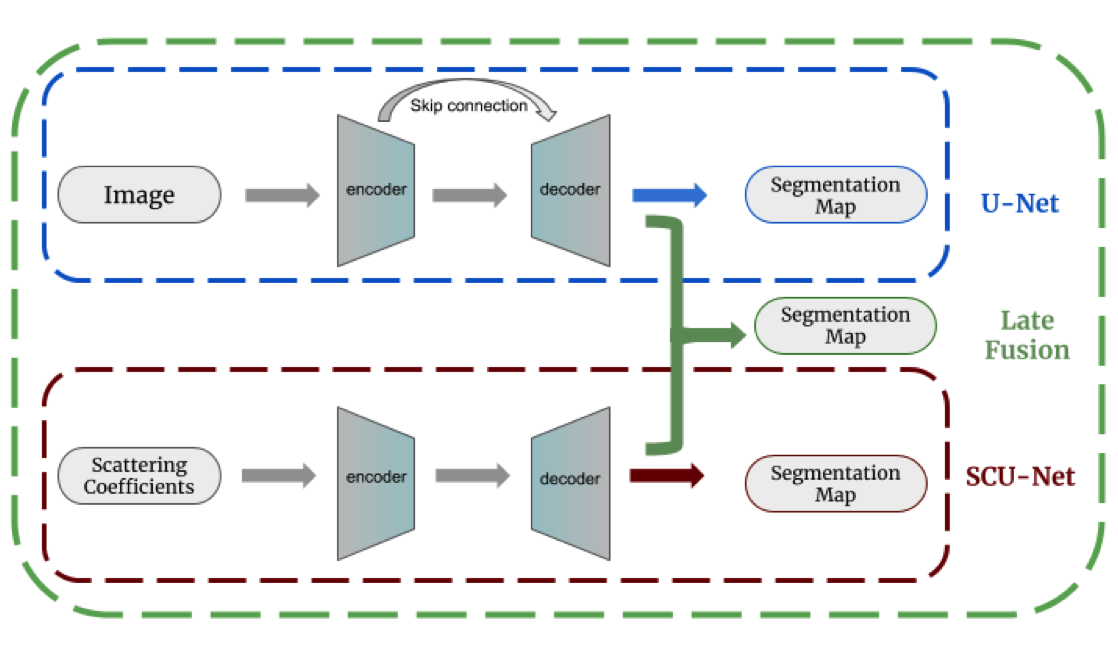Image segmentation using hybrid representations

ABSTRACT: This work explores a hybrid approach to segmentation as an alternative to a purely data-driven approach. We introduce an end-to-end U-Net based network called DU-Net, which uses additional frequency preserving features, namely the Scattering Coefficients (SC), for medical image segmentation. SC are translation invariant and Lipschitz continuous to deformations which help DU-Net outperform other conventional CNN counterparts on four datasets and two segmentation tasks: Optic Disc and Optic Cup in color fundus images and fetal Head in ultrasound images. The proposed method shows remarkable improvement over the basic U-Net with performance competitive to state-of-the-art methods. The results indicate that it is possible to use a lighter network trained with fewer images (without any augmentation) to attain good segmentation results.
Published in: IEEE International Symposium on Biomedical Imaging (ISBI), 2020
[ Website | Paper | BibTeX ]